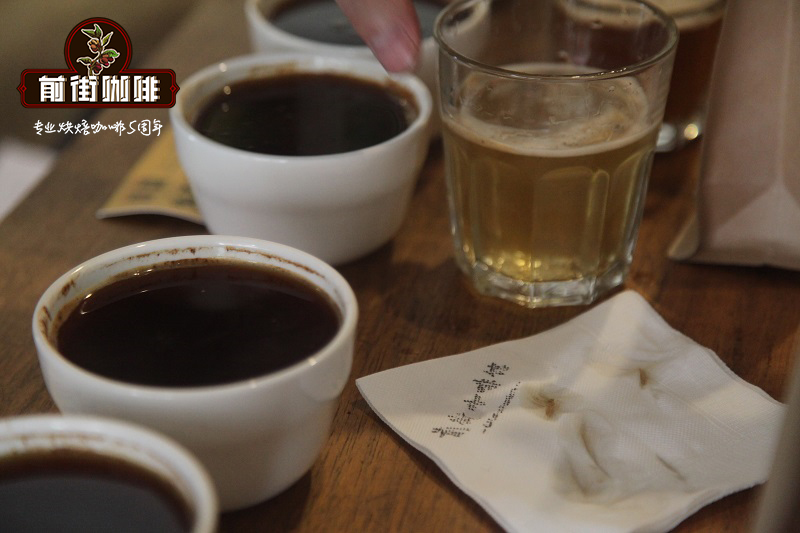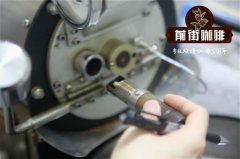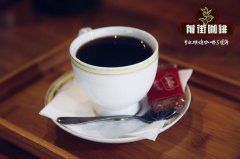Introduction of Kiambu producing area of Kenyan Coffee and Coffee Bean flavor and taste

Professional coffee knowledge exchange more coffee bean information please follow the coffee workshop (Wechat official account cafe_style)
KenyaAB Kiambu Gitwe
Kenya AB Komatina Cranberry
Producing area: Qianbu
Micro-area: Gitwe
Soil: volcanic clay
Altitude: 1400 m-1800 m
Varieties: Lmuri 28, SL-34, Ruiru 11
Treatment: Kenyan 72-hour washing
| 01 | production area profile |
Kenyan coffee producing area
Kenya (Kenya) is located in eastern Africa, adjacent to Ethiopia, the "source of coffee". Despite the fertile soil, coffee was first grown in the country when Bourbon (also known as French mission, to commemorate the introduction of French missionaries) was introduced from Brazil in 1893; like the story of "go left, go right", coffee did not move inland to the south but to the Red Sea. After hundreds of years of spread, after settling down and mutating all over the world, he returned to his hometown, the Great Rift Valley (The Great Rift Valley).
"Kenya" is one of the major coffee producing countries. More than 6 million people in the country are engaged in the coffee industry, mostly in the form of a combination of small farmers, wet treatment plants and cooperatives. Kenyan coffee is mainly treated by washing. Coffee trees are mostly planted in mountainous areas with an altitude of 1400 meters to 2000 meters above sea level. There are Ruiri, Thika, Kirinyaga and Mt in the producing areas. Kenya West, Nyeri, Kiambu and Muranga. Most of the famous producing areas in Kenya are concentrated in the central part, such as Nyeri, Kiambu, Kirinyaga and the western mountains near Uganda (Nakuru, Bungoma, Kitale, etc.)
Kiambu production area introduction:
Altitude: 1500-2200m
Harvest: first harvest: October-December, second harvest: June-August
Variety: SL-28, SL-34, Batian
Coffee cultivation in Kenya
Coffee farms are mostly small-scale operations with an annual output of hundreds of kilograms. They will decide to sell the fruit to the nearby processing plant (Coffee Factory) according to the delivery distance and the purchase price. Farmers own a small area of land, which is usually measured by the total number of trees on a piece of land, which means that producers often have more autonomy to strategically pick fresh coffee fruit. and can deliver the most mature fresh coffee fruit to the local factory (washing plant). Factories generally have abundant water resources for fine washing, including soaking coffee beans in fresh water for a long time to consolidate the unique Kenyan flavor.
The main varieties in Kenya are SL28 and SL34. It was cultivated and named by the "Scott Laboratories" laboratory in 1930. According to botanists in SL laboratory, SL28 and SL34 are genetic variants. Among them, SL28 has a mixed pedigree of French missionaries, mocha and Yemeni Tibica. The goal of cultivating SL28 was to mass produce coffee beans with high quality and resistance to diseases and insect pests. Although SL28 did not produce as much as expected, copper and broad bean-shaped beans have great sweetness, balance and complex flavor, as well as significant citrus and black plum characteristics. SL34 is similar to SL28 in flavor, with a heavier, fuller and cleaner finish than SL28, except for the complex acidity and great sweetness of the finish. SL34 has French missionaries, bourbon, and more Tibica ancestry. Dou looks similar to SL28, but is more adaptable to sudden heavy rain. It is these two important varieties that lead us to know the unique Kenyan coffee beans. At present, the popular varieties in Kenya include Ruiri 11 with high disease resistance but slightly lower taste, and Batian, K7 and Kent with high drought resistance.
02 | processing method
Kenyan 72-hour washing method
Kenyan coffee is famous for its rich layers and clean taste. Its unique Kenyan-style water washing method goes through two water-washing and fermentation procedures, commonly known as "double fermentation". It is a rather complicated but delicate method of raw bean treatment. This treatment is more time-consuming and water-consuming than ordinary water washing, so Kenyan coffee is more expensive, but it is also an indispensable method to create a unique sour flavor and clean taste of Kenyan coffee.
First washing and fermentation
After the coffee cherry harvest, the beans will first be picked by the specific gravity of the water flow; the principle is that the coffee fruit itself is screened by the difference in density and quality; the coffee beans with high density (heavy weight) will sink into the water, while the coffee beans with low density will float. The coffee fruits with high mature quality have high density, so they are screened out for further treatment.
After the high-quality and ripe fruits are selected, the peel is removed, washed and soaked, and the pectin mucus attached to the outer layer of raw beans is fermented. Pectin has natural sugars and alcohols, which play an important role in the development of sweetness, acidity and overall flavor of coffee.
The fermentation time is as long as 24 hours, and after fermentation, 80% of the pectin is removed, leaving only the flavor in the coffee beans.
The second washing and fermentation
Then enter the second washing fermentation process. After the coffee beans in the previous stage are cleaned, they are soaked in water again for 24 hours. This process increases proteins and amino acids, and the acidity of coffee beans creates complex and delicate layers of taste.
Finally, remove all the remaining pectin and move the coffee beans to a high scaffolding for sun drying, depending on the weather, which usually takes about 10 days.
03 | Analysis of raw beans
The varieties of [Kenyan AB Komatina cranberry] are SL-28, SL-34 and Ruiru 11. It has a great sense of sweetness, balance and complex flavor, as well as remarkable citrus and black plum characteristics.
[difference between Kenyan AB and Kenyan AA]
The quality of Kenyan coffee is strictly controlled, and it is divided into AA,AB,C,E,PB,TT,T,ML,MH according to size, particle and shape. These grades mainly distinguish the shape and size of beans, but not absolutely represent the quality of beans. Many people believe that beans with larger grains contain more oil that produces the aroma of coffee, and because of this, beans with larger grains are more expensive in the market. The size of AA is 17 and 18 mesh, and that of AB is 15 and 16 mesh.
In the same grade of beans, the highest grade is manor beans, followed by "+", and then the general AA,AB grade compared with AA,C grade is smaller beans, E grade is extra-large elephant beans, TT, T, ML, MH are local non-flowing beans.
As for the distinction of quality, Kenya uses the digital grading method to distinguish the quality of coffee, but this digital grading method is not much publicized, so few people know about it. Therefore, the classification is based on particles, and the PB with different shapes is about the same as AA, but if it is manor or +, it is two or one grade respectively. For example, AB manor beans are about the same as AA+ and PB+. The flavor grade of TOP, PLUS, FAQ,FAQ-- "Fair to Average Quality" will have some slight defective beans, but it will not affect the flavor.
04 | Baking analysis
This coffee has relatively small particles, medium density and low water content. The goal of baking is light medium baking, which is different from other shallow baking in Kenya. This cranberry uses light medium baking to reduce the intensity of sour taste, improves texture and balance, and makes the overall performance more sweet and juicy.
In the first batch of baking, the lower bean temperature is relatively high, the bean temperature is 200 degrees, and the firepower is also relatively high. In the baking process, it was found that the elevation of the bean was relatively low and the bean quality was slightly soft, so the baking technique of gradually lowering the fire and climbing steadily was adopted, and the firepower was adjusted separately when the bean entered the yellowing point, the dehydration was finished, and the precursor of an explosion was finished, so as to avoid the burns of the bean surface, prolong the explosion time slightly, increase the caramelization reaction time, and improve the texture and balance of flavor.
Roaster Yangjia 600g semi-direct fire
Enter the pot at 200 degrees Celsius, adjust the firepower to 150 degrees after opening the throttle for 3, 30 seconds, keep the throttle unchanged, the temperature recovery point is 1: 38 ", keep the firepower, when 5: 16", the bean surface turns yellow, the smell of grass disappears completely, enter the dehydration stage, the firepower is reduced to 120 degrees, and the throttle is adjusted to 4.
After dehydration at 7 '05pm, the firepower dropped to 80 degrees and black markings appeared on the bean surface, and the smell of toast obviously changed to coffee, which can be defined as a prelude to an explosion. At this time, listen carefully to the sound of the explosion point. Start the explosion at 8: 28 ", turn the firepower down to 50 degrees, and the throttle is fully open 5 (the firepower should be very careful, not so small that there is no bursting sound). After an explosion, the development is 2: 00 ", and the pot is 193 degrees.
This Kenyan coffee bean has a well-balanced texture, with obvious sweet and sour taste and soft flavor, with rich citrus, grapefruit and berry flavor.
05 | Cooking analysis
Recommended cooking methods: siphon, hand flushing
Degree of grinding: 3.5 (Japanese little Fuji R440)
V60 filter cup, 15g powder, water temperature 90 degrees, grinding 3.5.The ratio of water to powder is close to 1:15
35 grams of water is steamed for 30s
Segment: water injection to 108ml cut off, slow water injection to 225ml
That is, 30-108-225
Other suggestions for trickling extraction:
Normal pressure, recommended grinding degree of 3.5-4 / water temperature 91 °C
Philharmonic pressure, recommended 2.5 grinding degree, water temperature 89 °C
Hand punch: 3.5 degree of grinding, water temperature 89 °C
3.5 Grinding-90 degrees water temperature
Sweetness: ☆☆☆
Acidity: ☆☆☆
Bitterness: ☆
Related recommendation: world Coffee Manor area introduction: detailed introduction of coffee producing country Kenya
Important Notice :
前街咖啡 FrontStreet Coffee has moved to new addredd:
FrontStreet Coffee Address: 315,Donghua East Road,GuangZhou
Tel:020 38364473
- Prev

Kenya Coffee Origin list of Kenya Coffee Manors
Professional coffee knowledge exchange more coffee bean information please follow the coffee workshop (Wechat official account cafe_style) Kenya, the full name of the Republic of Kenya, is located in eastern Africa, the equator runs across the central part of the East African Rift Valley across the north and south. It is bordered by Somalia to the east, Tanzania to the south, Uganda to the west, Ethiopia and Sudan to the north, and the Indian Ocean to the southeast. Multiple plateaus in the territory, average
- Next

Kenya Coffee Origin Chania Manor Introduction French Missionary Bourbon Sunburn Flavor Description and Brewing
Professional coffee knowledge exchange More coffee bean information Please pay attention to coffee workshop (Weixin Official Accounts cafe_style)[Kenya Chania Estate French Missionary Bourbon Sun] Country: Kenya Region: Thika Processing Plant: Chania Estates Elevation: 1,525 meters Variety: French Missionary Bourbon Seed Treatment: Sun Treatment
Related
- Does Rose Summer choose Blue, Green or Red? Detailed explanation of Rose Summer Coffee plots and Classification in Panamanian Jade Manor
- What is the difference between the origin, producing area, processing plant, cooperative and manor of coffee beans?
- How fine does the espresso powder fit? how to grind the espresso?
- Sca coffee roasting degree color card coffee roasting degree 8 roasting color values what do you mean?
- The practice of lattes: how to make lattes at home
- Introduction to Indonesian Fine Coffee beans-- Java Coffee producing area of Indonesian Arabica Coffee
- How much will the flavor of light and medium roasted rose summer be expressed? What baking level is rose summer suitable for?
- Introduction to the characteristics of washing, sun-drying or wet-planing coffee commonly used in Mantenin, Indonesia
- Price characteristics of Arabica Coffee Bean Starbucks introduction to Manning Coffee Bean Taste producing area Variety Manor
- What is the authentic Yega flavor? What are the flavor characteristics of the really excellent Yejasuffi coffee beans?

